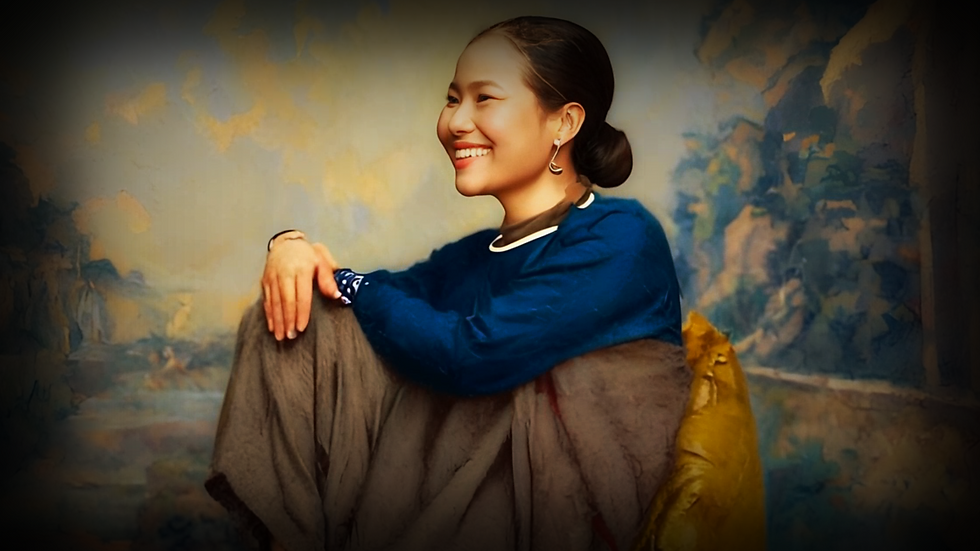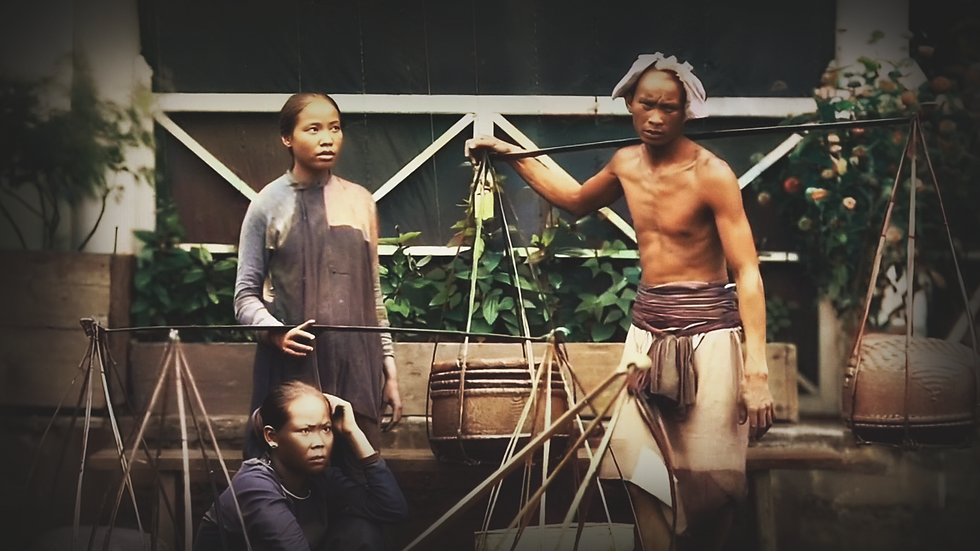Émile Gsell: The lens that captured the forgotten splendor of 19th-century Indochina
- Christophe Gargiulo

- Jul 16
- 4 min read
Émile Gsell (1838–1879) was one of the pioneers of photography. This self-taught French artist brought to light the majestic ruins of Angkor and the rich cultural mosaic of Southeast Asia at a time marked by expanding exploration and colonial encounters.

Born on December 30, 1838, in Sainte-Marie-aux-Mines, in the Haut-Rhin region of France, Émile Gsell led a life marked by a spirit of adventure and artistic sensibility, which elevated his work beyond mere documentation to create a unique historical archive.
Early life
Son of a canvas printer, Émile acquired his photographic skills during his military service in Cochinchina (southern Vietnam), where he was stationed from 1858 to 1866.
His talent quickly caught the attention of Ernest Doudart de Lagrée, leader of the first French expedition to explore the Mekong River, who hired him in 1866 as the official photographer responsible for capturing the mysterious and hitherto little-known temple complex of Angkor Wat, then under Siamese control.
The magic of Angkor
Between June and October 1866, equipped with primitive photographic techniques that required meticulous preparation, Gsell produced some of the first comprehensive images of the ruins of the temples of Angkor.

His photographs do more than document the architecture; they capture the profound grandeur and haunting isolation of a lost civilization, offering Europe its first authentic visual encounter with one of the world's greatest archaeological treasures. Often guided by Doudart de Lagrée's suggestions on framing and perspective, Gsell's images reveal both technical mastery and an empathetic eye for the aura that permeates the stone and shadow.
Commercial photographer
Following this expedition, Gsell settled in Saigon, where he founded the city's first commercial photography studio. There he organized and exhibited his photographs of Angkor as well as studies of Khmer civilization, offering Western audiences a window into the life and culture of Indochina.

His work goes beyond monumental ruins and includes intimate portraits, cultural depictions, and everyday scenes that highlight the region's ethnic diversity, such as Cambodian dancers, Vietnamese mandarins, Hmong warriors, and local villagers. These photos are now invaluable for understanding the social and cultural fabric of pre-colonial and early colonial Cambodia and Vietnam.
Ethnographic observer
In 1873, Gsell returned to Angkor for an expedition with Louis Delaporte. His photographic excellence was recognized internationally when he won a medal of merit at the Vienna International Exhibition, where he exhibited two albums, one devoted to the ruins of Angkor and the other to the customs and inhabitants of Annam and Cambodia. These distinctions confirmed Gsell's stature not only as a technical photographer, but also as an ethnographic observer whose work combined art and anthropology.

Continuing his explorations, Gsell joined the Brossard mission to Huế in 1875. Although the constraints of the mission prevented him from photographing certain subjects, he nevertheless managed to capture rare views of northern Vietnam, including Hanoi (then called Tonkin) and the Red River region. His portfolio includes the first known photographs of a woman in Tonkin, an important milestone in colonial visual history.
Witness to history
Despite his successes, Gsell's life was marked by the hardships of travel and the difficult conditions associated with tropical diseases. Exposed to fevers and the unhealthy climate of the regions he traveled through, Gsell's health declined rapidly. He died relatively young in Saigon on October 16, 1879, leaving behind several hundred photographs that would become a fundamental visual record of Indochina.
After his death, Gsell's photographic archives were preserved and sold by Auguste Nicolier, a supplier of chemicals and photographic equipment in Saigon.

His work subsequently passed into the hands of other photographers and dealers such as O. Wegener and Salin-Vidal, allowing his images to continue to circulate and exert their influence until the early 1880s.
It is remarkable that Gsell, who was a discreet man, rarely allowed himself to be photographed, so his face remains largely unknown. However, thanks to meticulous research, a group photo taken at Angkor during the 1866 expedition has been identified as showing him, offering a rare glimpse of the man behind the lens.
Today, Émile Gsell's vast photographic legacy is celebrated not only for its artistic value, but also for its historical significance. His images are a major resource for researchers studying the colonial history and cultural heritage of Cambodia and Vietnam. Alongside contemporaries such as Pun Lun and Aurélien Pestel, Gsell's pioneering work shaped early Western perceptions of Southeast Asia and contributed profoundly to the world's photographic heritage.

His work, which covers monumental architecture, ethnographic portraits, and spontaneous glimpses of daily life, is a lasting testament to the complexity and beauty of the region at a time of profound transformation. Through his lens, Émile Gsell invited the world to discover the intangible spirit of the lands and peoples of the Mekong, an invitation that resonates through the centuries.
Émile Gsell's work remains an essential bridge between two worlds, a window onto Southeast Asia at the dawn of change, immortalized in monochrome elegance by a photographer whose vision transcended his short life. His images endure not only as historical documents, but also as poetic embodiments of a place, a culture, and an era, making him one of the most important visual chroniclers of his time.







Comments